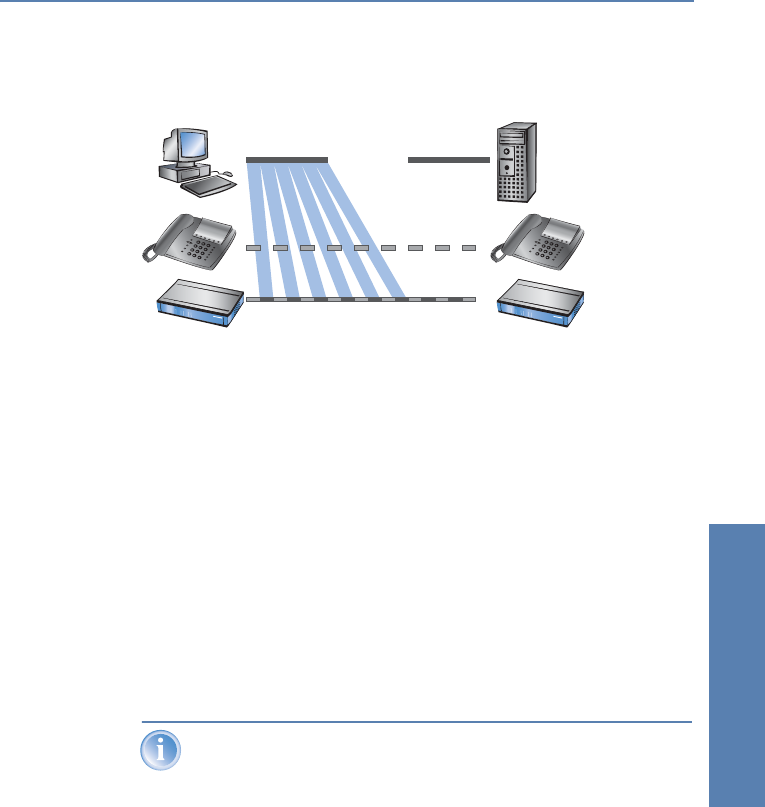
̈ Chapter 9: Quality of Service LANCOM Reference Manual LCOS 3.50
177
Quality of Service
A resulting delay has no disadvantageous effect to the TCP-secured FTP trans-
fer.
Two different procedures exist to influence the packet length:
̈ The LANCOM can inform the peers of a data connection that they should
only send data packets up to a certain length. Thereby, an appropriate
PMTU (Path Maximum Transmission Unit) is enforced on the sending side.
This procedure is called PMTU reduction”.
The PMTU reduction can be used for sending as well as for receiving direc-
tion. For the sending direction, the data source of the own LAN is adjusted
with the PMTU reduction to a smaller packet size, for the receiving direc-
tion the data source of the WAN, e.g. web or FTP servers in the Internet.
Provided that the data connection already exists when the VoIP connec-
tion is started, the senders regulate packet lengths very quickly to the per-
mitted value. When setting up new data connections while a VoIP
connection is already established, the maximum permitted packet length
is negotiated directly during the connection phase.
The reduced packet length on the data connection still remains also
after terminating the VoIP connection, as long as the sender checks
the PMTU value again.
̈ The LANCOM is able to split packets to be sent above an adjustable max-
imum size (e.g. 256 byte) into smaller units itself. But such a procedure
called ”fragmentation” is not supported by all servers of the Internet,
because dealing with fragmented packets is considered as a security risk,
and therefore is turned off by many servers. That’s why disturbances can
occur e.g. while downloading or while transmitting web pages.
Thus, this procedure is recommended only for connections without involv-
ing unknown servers, e.g. for a direct connection of branches to their head


















